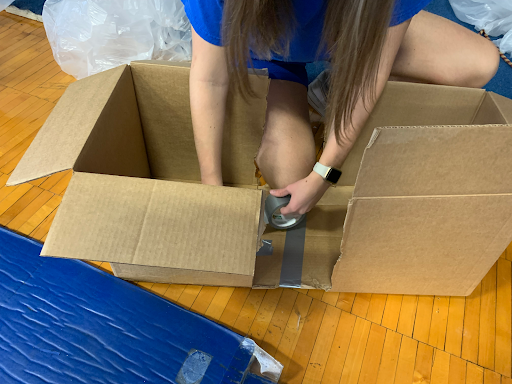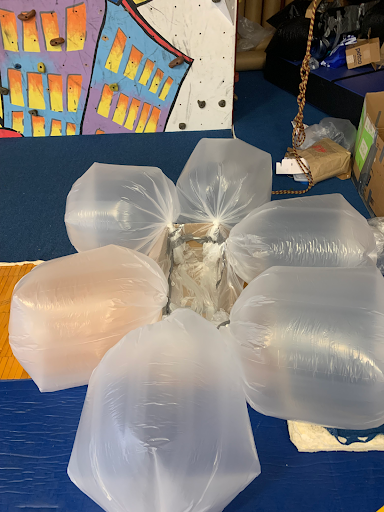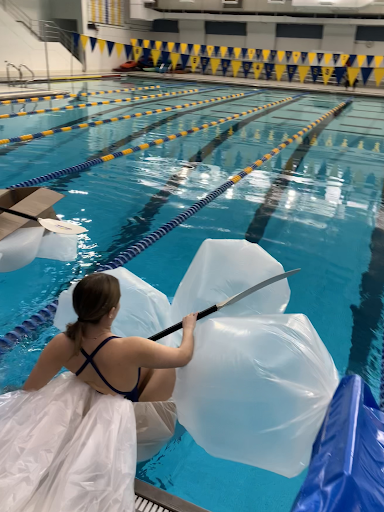Using cardboard boxes as vessels, as well as plastic bottles and bags for buoyancy, Sandburg P.E. students have found a second purpose for commonly thrown-away items: boat building.
Carl Sandburg High School offers a variety of classes, and notably includes many options within the Physical Education department. Adventure Education is one course that gives students the opportunity to learn complex but thrilling skills, such as rock climbing and kayaking. Students were challenged to create a boat that must sail across the pool without sinking, and their challenge would come to life on Monday, November 13 during an in-class race.
But the race starts far before the initial competition. Mrs. Drzonek, the Adventure Education teacher, explained how students were to assemble their watercraft. “The students are given two days to build their boat in class. A few days before that, they are told which materials they are allowed to use, which are plastic water jugs, cardboard boxes and duct tape. If students want to use any other materials they have to clear it with me ahead of time.”

“It was a bit difficult to generate functional ideas,” stated Sandburg Adventure Ed student Teresa Niles. “Especially since we had zero background [knowledge] on what makes water vehicles stable enough to float.”
Although many students felt initially puzzled by the challenge, most persisted with positivity throughout the process. “It allowed us to utilize our creativity and discover how we can create functional tools – like boats – out of everyday materials,” said Niles.
Mrs. Drzonek agreed, saying that, “With four to five students per boat, it will require all of their input to only one design. They must learn to advocate what they think is really important and concede to what they feel while also incorporating other students’ ideas,” she said.

When the day of the race finally arrived, one person in each group was the test subject to assess their boat’s functionality. The goal for the students was to sail on their boat, with a paddle, across the entire length of the pool.
Some groups had high expectations for their ship, while others just hoped that their group member would persevere against the water. Niles said, “I guess you could say our boat was versatile! It went from being like a raft to a submarine to its final form as a kickboard-like flotation device, which did technically make it across. It didn’t really function as we’d imagined it to, but I guess you could say it worked. I mean, it certainly floated, and it got all the way across, but it did require partial submersion of the operator of the boat from the legs down.”
Not all teams were entirely successful. While some groups endured their journey across the pool, many faced the unfortunate consequences of their boats sinking.

Constructing a vessel out of limited items is no easy task, though, and whether a group floated across the entire pool or not, they undeniably learned important skills and made some unique memories.
Mrs. Drzonek noted, “Even if a student did not successfully float their boat across the pool, they can still take away the teamwork needed to come up with the idea, having fun with their peers, and most importantly, knowing when to give and when to take on their suggestions.”
When taking on a challenge, everyone envisions a successful outcome. However, Adventure Ed’s boat construction and race shows how important the lessons along the journey are, like learning to compromise through problem-solving and trusting the process with your teammates.
Mrs. Drzonek concluded, “There will be things that go your way and there will be things that won’t, but knowing that together you can find a solution will help meet the needs of everybody.”

